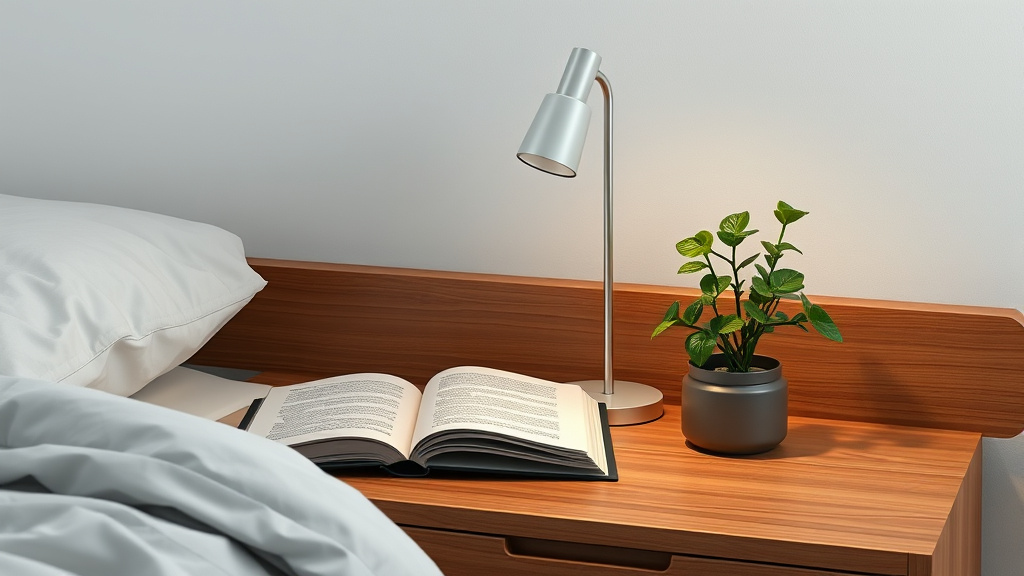Recharge Your Mind: Best Digital Detox Tips for Mental Health (2025 Guide)
In today’s hyper-connected world, the best digital detox tips for mental health have become essential for maintaining emotional balance and overall well-being. With the constant availability of smartphones, social media, and other digital platforms, many individuals experience screen fatigue, which can significantly impact their mental clarity, dopamine balance, and sleep quality. Engaging in a digital detox not only helps to alleviate these pressures but also promotes digital wellbeing, allowing us to reconnect with ourselves and the physical world around us. Whether you’re seeking a productivity boost or simply aiming to reduce screen time stress, incorporating mindful strategies can profoundly improve your mental health and foster healthier technology habits.

Simple digital detox habits help reduce stress and improve focus.
The importance of a self-care routine that includes regular opportunities to unplug cannot be overstated. By consciously setting boundaries and practicing mindfulness practices, you encourage your brain to restore its natural balance. Unplugging from digital devices offers a much-needed mental reset, enhancing your capacity for focus and emotional resilience. As you explore these best digital detox tips for mental health, consider how small changes in your daily habits can lead to substantial benefits—improving sleep, reducing anxiety, and cultivating greater presence and joy. This comprehensive approach underscores the value of digital detoxing not just as an occasional break, but as an integral part of a healthy lifestyle aimed at nurturing mental clarity and emotional well-being.
Why Digital Detox Matters for Mental Health
The Psychological Impact of Screen Overload
In our digital age, the constant barrage of notifications, emails, and social media updates can lead to digital overload. This ceaseless stream of information often leaves our brains in a state of heightened alertness, making it difficult to achieve true mental rest. Prolonged exposure to screens has been linked to increased levels of anxiety, irritability, and difficulty concentrating. The brain, overwhelmed by multitasking and rapid information shifts, becomes less effective at processing complex thoughts, which can diminish overall mental clarity. Recognizing these effects underscores the importance of reducing screen time stress and embracing strategies that help mitigate these adverse outcomes.
Additionally, constantly seeking validation through social media can interfere with our dopamine balance, leading to dependency and emotional fatigue. When we spend excessive time scrolling, we inadvertently deprive ourselves of the opportunity to engage in restorative activities such as physical exercise, meditation, or hobbies that foster genuine happiness. This emphasizes the need for intentional digital wellbeing habits that prioritize quality over quantity of digital interaction. Implementing a digital detox offers a chance to reset these neurochemical imbalances and develop healthier, more satisfying ways to engage with technology.
Social Media and Emotional Fatigue
Social media has revolutionized communication, but it also comes with a hefty emotional toll. Platforms designed to capture our attention often foster comparison, envy, and FOMO (fear of missing out), which contribute to emotional fatigue. The constant exposure to curated images and idealized lifestyles can distort our self-perception and erode our self-esteem. Over time, this leads to decreased mood stability and can exacerbate mental health issues such as depression and anxiety.
Taking deliberate breaks from social media or engaging in mindfulness practices during digital detoxes can mitigate these effects. A conscious effort to limit emotional consumption from digital sources allows our minds to recalibrate and regain a sense of authenticity and self-acceptance. These benefits of digital detox extend beyond mental health; they cultivate a more genuine connection with ourselves and others, fostering mental wellbeing that is less dependent on external validation.
How Digital Detox Helps Rebalance the Mind
Engaging in a digital detox helps the mind to recover from the overstimulation caused by constant connectivity. It creates space for introspection, relaxation, and the development of healthy digital wellbeing habits. As we detach from screens, our brain has the opportunity to restore its natural dopamine levels, which can lead to improved mood, motivation, and focus. This process is akin to resetting a device—allowing it to function optimally when reconnected.
Furthermore, taking regular breaks from digital devices encourages the cultivation of mindfulness practices, which are proven to help manage stress, increase emotional resilience, and foster greater mental clarity. When we step away from the digital noise, we become more attuned to our surroundings, thoughts, and emotions—crucial components of a balanced, healthy mind. This heightened awareness enhances self-care routines, ultimately leading to improved sleep, reduced anxiety, and an increased capacity to enjoy meaningful in-person interactions.
Best Digital Detox Tips for Mental Health
Schedule Screen-Free Time

Scheduling phone-free hours promotes relaxation and mindfulness.
Designating specific periods in your day as screen-free time is one of the most effective best digital detox tips for mental health. Whether it’s during meals, an hour before bed, or first thing in the morning, creating designated moments for disconnecting can significantly reduce screen fatigue. To maximize this practice, consider activities like reading, journaling, or taking a walk outdoors—all of which foster mindfulness practices and deepen your connection to the present moment.
GlowWellnessLife suggests that setting a routine of regular device-free intervals improves not only mental health but also physical well-being. During these breaks, your brain can relax and reset, paving the way for better sleep improvement, increased attention span, and heightened productivity boost when you return to work or digital tasks. Building this habit gradually helps integrate it seamlessly into your lifestyle, making unplugging a natural part of your day.
Practice Mindful Tech Usage
Another powerful best digital detox tip for mental health involves practicing mindful tech usage. This means becoming conscious of how, when, and why you engage with digital devices. Instead of aimless scrolling, set specific intentions for your screen time, and pay attention to how digital consumption affects your mood and energy levels. Incorporate techniques such as setting tech boundaries, turning off non-essential notifications, or using apps that support digital balance to help cultivate healthier habits.
Being mindful also involves recognizing the signs of screen fatigue early on, such as eye strain, irritability, or difficulty concentrating. By tuning into these signals, you can proactively implement digital wellbeing strategies like scheduled breaks or meditation to maintain mental clarity and reduce stress. When combined with a broader self-care routine, mindfulness practices serve as a cornerstone for sustaining mental health in our digital world.
Go Offline One Day a Week
Committing to an entire day offline each week is a transformative step towards achieving mental wellness. This digital detox approach provides ample opportunity to engage in activities that foster real-world connections, creativity, and self-reflection. Whether it involves spending time with loved ones, exploring nature, or pursuing hobbies like painting or cooking, going offline helps to nourish the mind away from digital distractions.
Embracing this practice also supports sleep improvement by reducing exposure to blue light in the evening and eliminating digital interruptions that hinder restful sleep. Over time, consistent offline days cultivate healthier digital wellbeing habits, reinforcing the importance of balance, presence, and genuine engagement with the physical world. This routine encourages a healthier relationship with technology, reducing screen fatigue and enhancing overall mental resilience.
Replace Screen Time with Creative Activities
Replacing passive screen time with active, creative pursuits is an enjoyable way to incorporate best digital detox tips for mental health. Activities like drawing, writing, gardening, or playing a musical instrument stimulate different areas of the brain and promote mental clarity. Engaging in such endeavors boosts dopamine naturally, providing a mood lift and a sense of accomplishment that screens may not offer.
Furthermore, creative activities foster mindfulness practices, allowing you to enter a flow state where worries fade and focus deepens. This shift not only counters screen fatigue but also leads to a more fulfilling self-care routine. When you connect with your creative side, you reinforce the importance of balancing digital life with offline passions, supporting long-term digital wellbeing and emotional health.
How to Build a Healthy Digital Routine
Set Clear Boundaries for Work and Leisure
A crucial aspect of fostering digital wellbeing is establishing clear boundaries between work and leisure time. For many professionals, the lines often blur, leading to extended screen hours and increased stress. Creating designated work hours and strictly adhering to them helps sustain mental clarity and prevents burnout. Use tools like alarms or calendar blocks to delineate work time, and avoid checking emails or work apps outside these periods.
Implementing physical boundaries, such as a dedicated workspace or keeping work devices out of the bedroom, reinforces these limits. When these boundaries are respected, it becomes easier to transition into mindfulness practices during leisure, promoting relaxation and mental reset. This routine encourages a healthier relationship with technology, contributing to better sleep, reduced stress, and a more sustainable self-care routine.
Create Tech-Free Spaces at Home
Designating specific areas in your home as tech-free zones is an effective method to promote digital wellbeing. For instance, the dining room or bedroom can be designated as spaces dedicated to connection and rest, free from screens. This physical separation encourages more face-to-face interactions, enhances mindfulness during meals, and supports sleep improvement by minimizing blue light exposure before bed.

Creating phone-free zones encourages mental calmness.
Creating these zones fosters a more conscious engagement with technology—using devices intentionally rather than habitually. Over time, this practice cultivates healthier digital wellbeing habits and reduces screen fatigue, helping your mind unwind and recover naturally.
Use Apps that Support Digital Balance
Incorporating apps that promote digital balance can aid in building a sustainable digital wellbeing routine. These tools can monitor screen time, block distracting sites, or remind you to take breaks—empowering you to maintain mindfulness practices and prevent screen fatigue. Setting goals for daily or weekly usage aligns with your personal health and productivity targets, making it easier to implement best digital detox tips for mental health.
Always choose apps designed with user wellbeing in mind, ensuring they contribute positively to your self-care routine without becoming an additional source of stress. As these tools encourage intentional engagement, they support the development of healthier digital wellbeing habits and grander goals like dopamine balance and overall mental resilience.
FAQs about Digital Detox and Mental Health
How often should I do a digital detox?
The frequency of digital detoxes varies depending on individual needs and digital consumption levels. For some, a weekly or bi-weekly unplugging session is sufficient, while others benefit from monthly longer breaks. The key is to listen to your body and mind, noticing signs of screen fatigue or emotional exhaustion, and adjusting accordingly. Regular digital wellbeing habits—like daily screen-free moments—are fundamental to maintaining mental clarity and resilience in a digitally saturated environment.
Is it realistic to live completely offline?
Living entirely offline is challenging in today’s interconnected reality, but it is possible to significantly reduce digital dependency through intentional habits. The goal isn’t perfection, but rather cultivating a balanced approach. Small, consistent steps—like going offline one day a week or establishing tech-free spaces—can lead to meaningful improvements in mental health and overall wellbeing. Emphasizing mindfulness practices and setting boundaries makes living offline more sustainable and rewarding.
Can a digital detox improve sleep and mood?
Absolutely. Digital detoxes, especially before bedtime, help diminish blue light exposure, which is known to interfere with melatonin production—the hormone responsible for sleep. Additionally, disconnecting from digital sources reduces overstimulation and emotional triggers, leading to better sleep quality and more stable moods. Incorporating mindfulness practices during detox periods further amplifies these benefits, fostering greater mental clarity and emotional balance. Many find that regular digital wellbeing routines enhance their overall mental health and life satisfaction.
Conclusion
In a time when digital devices are woven into every aspect of our lives, understanding the benefits of digital detox and practicing best digital detox tips for mental health is essential for sustained well-being. By consciously scheduling screen-free time, practicing mindfulness, setting boundaries, and creating tech-free spaces, we can mitigate screen fatigue and restore mental clarity. These habits help rebalance neurochemical pathways, improve sleep, and foster authentic connections with ourselves and others. Embracing a balanced approach to technology not only enhances our mental health but also cultivates a more present, joyful, and fulfilling life. For more actionable tips on mindful living, visit our Mental Wellness Hub, where practical guidance supports your journey toward holistic health and happiness.
